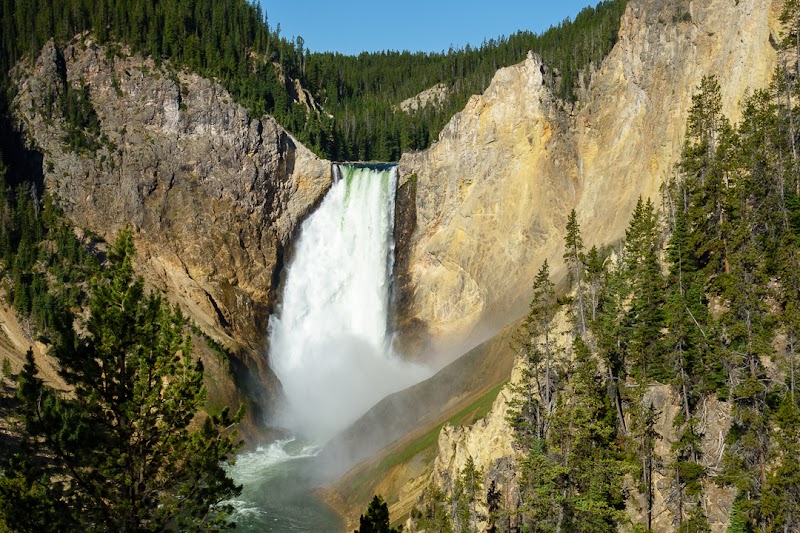
The Yellowstone Ski Festival in Gardiner, Montana, offers an electrifying winter adventure for skiers of all levels. Navigate rugged trails, experience Yellowstone’s raw winter landscape, and equip yourself with firsthand insights to conquer the snow with confidence.
Hydrate for Dry Winter Air
Cold weather limits thirst signals, but dehydration impairs performance—drink water consistently before, during, and after skiing.
Choose the Right Footwear
Wear insulated, waterproof ski boots with good ankle support to handle variable snow and ice conditions safely.
Plan for Weather Fluctuations
Dress in layers to adjust quickly from cold mornings to warmer midday skiing, including a windproof outer shell for exposed sections.
Arrive Early for Trail Familiarization
Arriving a day ahead gives you time to explore trailheads and perform equipment checks, reducing surprises on race or ski days.
Yellowstone Ski Festival: Where Winter Meets Wild Adventure in Gardiner, Montana
Every February, Gardiner, Montana, becomes a magnet for winter adventurers at the Yellowstone Ski Festival, a spirited celebration of snow, speed, and mountain endurance. This event stretches beyond the usual ski race—it’s an engagement with Yellowstone’s fierce winter spirit, where frozen rivers dare, and pine forests stand watch like silent sentinels. The festival focuses on cross-country and backcountry skiing, inviting participants of all skill levels to engage in routes that offer both challenge and scenery.
Gardiner serves as the gateway to Yellowstone’s rugged wilderness. Trails wind through forested landscapes, snow-laden and crisp, elevating anywhere between 6,500 to 7,300 feet. Expect varied terrain: groomed paths for classic cross-country skiers and untracked powder ready for backcountry explorers eager to test their skills. The festival courses range from approachable 5K loops to demanding 50K routes that push stamina and technique.
The air here carries a biting chill that sharpens focus. Step onto your skis with sturdy boots designed for traction on snow and ice. The terrain demands careful pacing – parts encourage steady propulsion on flat expanses, while sudden inclines summon bursts of power. Keep hydrated—winter air can deceive with dryness—and layer intelligently to adjust to shifting temperatures and exertion levels.
Beyond competition, the Ski Festival offers workshops, gear demos, and storytelling events that tie the outdoor experience with practical know-how. Embrace the quiet force of winter wilderness rather than battle it; the river under the ice, the fir trees bending under snow’s weight, all invite respect and awareness.
Planning your visit means securing lodging early, as Gardiner fills quickly during the festival. Rentals and guides are available for newcomers seeking expert navigation. Once you’re on snow, consider midday skiing to catch light at its peak and avoid afternoon chill or afternoon wind gusts carving through the open stretches. Whether you aim to race, explore, or simply absorb Yellowstone’s winter calm, the festival promises a demanding yet rewarding encounter with Montana’s wild season.
Nearby Trips
All Adventures
Boat Charters
Water Activities
Adventures near Gardiner, Montana
Discover the unique and memorable adventures that make Gardiner, Montana special.
Frequently Asked Questions
Are beginner skiers welcome at the Yellowstone Ski Festival?
Absolutely. The festival features multiple course lengths and difficulty levels, including groomed loops ideal for beginners to gain confidence. Workshops and guided sessions are available to support newcomers.
What wildlife might I see around Gardiner during the festival?
Winter brings sightings of elk herds moving through valleys, bighorn sheep on rocky slopes, and the occasional wolf silhouette against snowy backdrops. Always observe from a safe distance and respect local guidelines.
How do I prepare for rapid weather changes while skiing here?
Pack layered clothing, monitor weather forecasts daily, and plan to ski during midday when conditions are most stable. Carry emergency supplies in case sudden storms or temperature drops occur.
Is renting equipment locally reliable, or should I bring my own?
Gardiner offers reputable rental shops with well-maintained gear, but bringing your own equipment ensures familiarity and fit, which is beneficial for longer routes or races.
Are there any hidden viewpoints along the festival trails?
Yes, the ridge near the Yellowstone River crossing reveals expansive valley views rarely crowded. Early morning light accentuates snow textures and distant ridgelines, perfect for brief stops.
What environmental stewardship practices does the festival promote?
The festival emphasizes Leave No Trace principles, encourages wildlife respect, and organizes post-event trail clean-ups to preserve the delicate winter ecosystem.
Recommended Gear
Cross-Country Skis with Metal Edges
Metal edges improve control on icy terrain typical of Yellowstone’s winter trails.
Layered Clothing System
Allows quick temperature regulation; base layers wick moisture while mid-layers insulate and an outer shell blocks wind.
Hydration Pack or Insulated Water Bottle
Staying hydrated is vital, but liquids must be protected from freezing during colder times.
Headlamp or Hand Warmers
Short daylight hours require lighting for early or late sessions; hand warmers offer comfort during breaks.
Local Insights
Hidden Gems
- "The 'Whispering Pines Loop,' a quiet trail segment that reveals old-growth firs shaped by winter winds."
- "The frozen Rose Creek crossing, where delicate ice formations sculpt natural art."
Wildlife
- "Elk herds browsing lodgepole pine stands"
- "Bighorn sheep navigating steep escarpments"
- "Wintering bald eagles along the Yellowstone River"
History
"Gardiner’s roots extend to its role as Yellowstone’s northern gateway since the park’s 19th century founding, with the area once supporting trappers and early conservationists."
